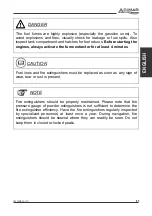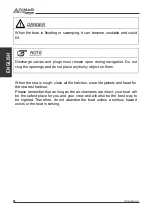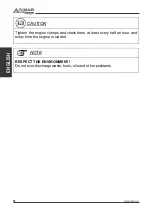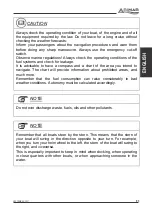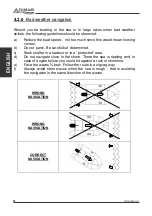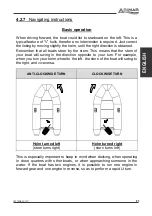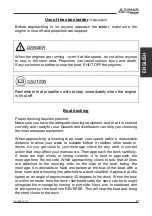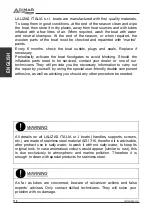
99
SEPTEMBER 2021
ENGLISH
These steps are reversed for docking to port. To become familiar with this
procedure an adequate practice is required
DANGER
When docking, passengers and crew must remain seated until all
manoeuvres are completed. Leave the boat only when it has be fastened to
the moorage and the engine(s) are shut off.
Leaving the dock
Before leaving the dock, check for any wind, current action or anything that
may affect your manoeuvre.
Remember that all docking and undocking manoeuvres must be performed
at idle speed.
NOTE
Before leaving, make sure all lines have been unfastened and hauled in -
including fenders. If lines remain in the water, they could wrap around the
propellers thus damaging the propeller and engine.
Make sure that all passengers are seated and loads are fastened.
NOTE
Before leaving the dock, make sure all lines have been unfastened and
hauled in. Lines left in the water may damage the propellers.
Once the preliminary operations are completed, leave the dock by means
of a boathook. Then start the engine at idle to reach the exit of the harbour.
After exiting the harbour at a safe distance, you can accelerate to the
cruising speed. Avoid sudden accelerations and high cruising speeds. This
would only increase the risk and the fuel consumptions.
A sudden acceleration reduces the planing time. Therefore, this manoeuvre
requires the utmost attention. In such conditions, a special ability and
quickness of movements are necessary to control the boat. We
recommend to accelerate gradually, regardless of the loading conditions.
This would prevent the “TAKE OFF” risk.
DANGER
It is extremely dangerous to plane over high waves. In this case the risk of
tilting is very high.

